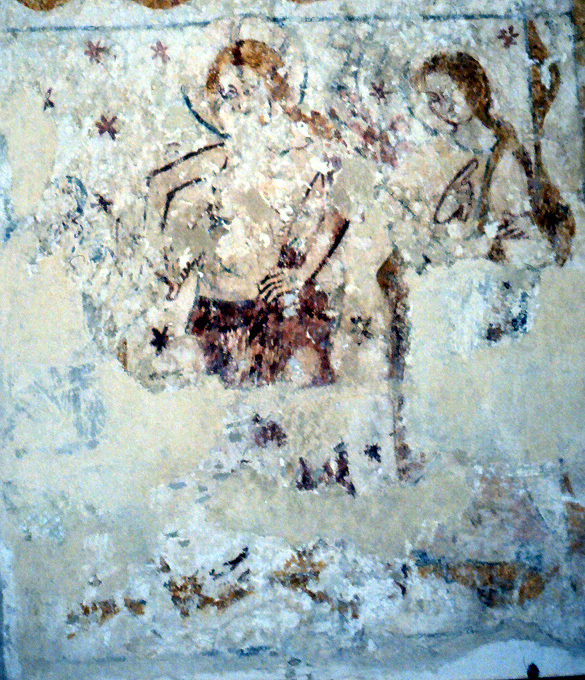Chalfont St Giles, Buckinghamshire (†Oxford) c.1330
Passion Cycle

Only two identifiable scenes from this Passion Cycle are now left. At the left below is the Crucifixion itself with Mary, her hands clasped in prayer at the left, and St John, holding a book, at the right. John’s body sways in the S-curve that marks the painting as 14th century, although it is not comparable for elegance to the best of those remaining – at Brent Eleigh for example.
Other details are well handled, though, such as the emaciated body of Christ, with ribs faintly showing, and the particularly vicious-looking nails piercing his feet. In many important ways it is a very typical 14th century painting.

Much rarer, though, is the other remaining identifiable incident in the cycle, the Incredulity of Thomas. Even moderately clear examples of this subject very seldom remain, and this is only the third to be added to this site (the others are at Rotherfield in Sussex and included in the Passion Cycle at at Little Witchingham in Norfolk. Interestingly, all three show Thomas doing what the Gospels do not record him doing – i.e. actually touching the wound in Christ’s side. Instead he simply recognised and acknowledged his Master, as narrated in John 20, 27-28. I suspect that medieval painters, at least in English churches, were concerned more for the drama of the moment, than rigid conformity to the Gospel accounts – of which in any case their understanding would have been imperfect in an illiterate age.
Here at the left, hardly anything is left of Thomas himself, although a few hints of a bearded face can be made out, and it is obvious that this is a kneeling figure. In the centre of the photograph, Christ’s own hand guides that of Thomas into the wound, while another figure, probably another disciple, despite the rather feminine appearance, stands at the right.
There are several other paintings in the church – including an example of St Anne teaching the Virgin to read and, on the same page, an important and extremely rare Miracles of the Virgin. A fragmentary Tree of Jesse is still to come.